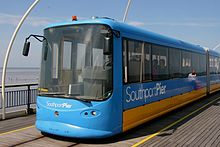| This article needs additional citations for verification. Please help improve this article by adding citations to reliable sources. Unsourced material may be challenged and removed. Find sources: "Three foot six inch gauge railways in the United Kingdom" – news · newspapers · books · scholar · JSTOR (January 2021) (Learn how and when to remove this message) |
| Track gauge | ||||||||||||||||||||||||||||||||||||||||||||||||||||||||||||||||||||||||||||||||||||||||||||||||||||||||||||||||||||||||||||||||||||||||||||||||||||
|---|---|---|---|---|---|---|---|---|---|---|---|---|---|---|---|---|---|---|---|---|---|---|---|---|---|---|---|---|---|---|---|---|---|---|---|---|---|---|---|---|---|---|---|---|---|---|---|---|---|---|---|---|---|---|---|---|---|---|---|---|---|---|---|---|---|---|---|---|---|---|---|---|---|---|---|---|---|---|---|---|---|---|---|---|---|---|---|---|---|---|---|---|---|---|---|---|---|---|---|---|---|---|---|---|---|---|---|---|---|---|---|---|---|---|---|---|---|---|---|---|---|---|---|---|---|---|---|---|---|---|---|---|---|---|---|---|---|---|---|---|---|---|---|---|---|---|---|---|
| By transport mode | ||||||||||||||||||||||||||||||||||||||||||||||||||||||||||||||||||||||||||||||||||||||||||||||||||||||||||||||||||||||||||||||||||||||||||||||||||||
| By size (list) | ||||||||||||||||||||||||||||||||||||||||||||||||||||||||||||||||||||||||||||||||||||||||||||||||||||||||||||||||||||||||||||||||||||||||||||||||||||
|
||||||||||||||||||||||||||||||||||||||||||||||||||||||||||||||||||||||||||||||||||||||||||||||||||||||||||||||||||||||||||||||||||||||||||||||||||||
| Change of gauge | ||||||||||||||||||||||||||||||||||||||||||||||||||||||||||||||||||||||||||||||||||||||||||||||||||||||||||||||||||||||||||||||||||||||||||||||||||||
| By location | ||||||||||||||||||||||||||||||||||||||||||||||||||||||||||||||||||||||||||||||||||||||||||||||||||||||||||||||||||||||||||||||||||||||||||||||||||||
 |
||||||||||||||||||||||||||||||||||||||||||||||||||||||||||||||||||||||||||||||||||||||||||||||||||||||||||||||||||||||||||||||||||||||||||||||||||||





One of the first railways using 3 ft 6 in (1,067 mm) gauge track was the Little Eaton Gangway in England, constructed as a horse-drawn wagonway in 1795. Other 3 ft 6 in (1,067 mm) gauge wagonways in England and Wales were also built in the early 19th century. Also during this time, numerous tram networks were built in 3 ft 6 in (1,067 mm) gauge (see table below).
Railways
See also
References
- Silkstone Waggonway, South Yorkshire: Survey Report (PDF). Vol. 1. Yorkshire Archaeological Trust. August 2012.
- British narrow gauge railways
- Heritage railway
- 2 ft and 600 mm gauge railways in the United Kingdom
- 2 ft 6 in gauge railways in the United Kingdom
- 3 ft gauge railways in the United Kingdom
- Three foot six inch gauge railways in the United States
| Track gauge (list) | |
|---|---|
| Minimum-gauge Minimum-gauge railways | |
| Narrow gauge |
|
| Standard gauge |
|
| Broad gauge |
|
| List of track gauge articles | |
| Gauge differences | |
| Transport mode | |
| Categories | |
